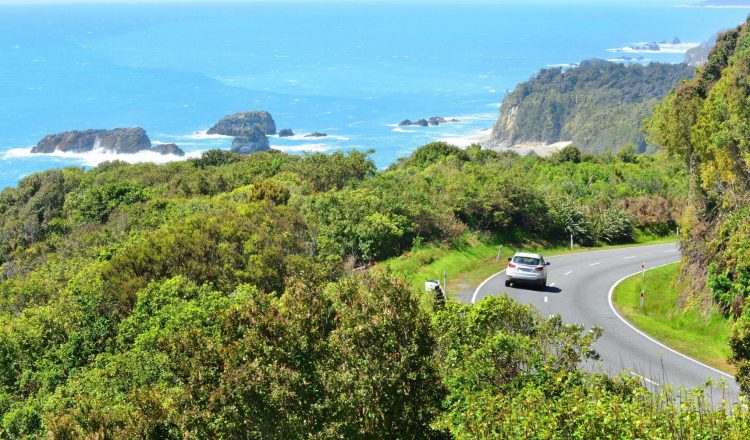Biển báo đường
Hầu hết các biển báo bạn sẽ thấy trên các con đường ở New Zealand là các biển báo mang tính biểu tượng quốc tế. Điều này có nghĩa là họ sử dụng các hình dạng và biểu tượng giống như các biển báo giao thông trên toàn thế giới. Các dấu hiệu tượng trưng được sử dụng vì chúng nhanh đọc và dễ hiểu đối với tất cả người lái xe. Biển báo của New Zealand thường được làm bằng chất liệu phản chiếu, giúp chúng dễ đọc hơn vào ban đêm.
Ba loại biển báo
Các biển báo trên đường của chúng ta có thể được chia thành ba loại:
- Dấu hiệu bắt buộc
- Dấu hiệu cảnh báo
- Dấu hiệu thông tin.
Bạn phải có khả năng nhận ra và hiểu từng loại dấu hiệu.
Dưới đây là một số ví dụ về các dấu hiệu này. Các ví dụ được hiển thị chỉ là một mẫu nhỏ của các biển báo được sử dụng trên các con đường của New Zealand. Họ nhằm giúp bạn làm quen với ba loại biển báo chính thay vì giới thiệu cho bạn tất cả các biển báo bạn sẽ thấy khi lái xe.
Dấu hiệu bắt buộc
Các dấu hiệu bắt buộc cho bạn biết những gì bạn phải hoặc không được làm. Chúng thường có màu đỏ hoặc xanh lam.

Rẽ phải
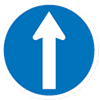
Tiếp tục đi thẳng về phía trước
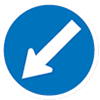
Giữ trái

Bạn không được đi nhanh hơn 50km/h
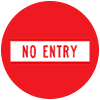
Bạn không được lái xe vào con đường này
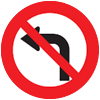
Bạn không được rẽ trái
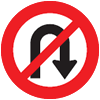
Bạn không được quay đầu

Bạn phải dừng lại và nhường đường

Bạn phải giảm tốc và nhường đường (hoặc dừng lại, nếu cần thiết)
Trường học tuần tra — bạn phải dừng lại
Một số dấu hiệu bắt buộc có đường viền màu đỏ.

Bạn phải đi bên trái trừ khi đi qua

Làn đường dành cho xe buýt cũng có thể được sử dụng cho xe máy, xe mô tô và xe đạp

Làn xe buýt chỉ dành xe buýt
Làn đường chuyển tuyến chỉ được sử dụng cho các loại xe chở người, xe mô tô, xe mô tô, xe gắn máy và các loại xe chở ít nhất số người ghi trên biển báo (ví dụ: T2 có nghĩa là hai người trở lên, T3 có nghĩa là ba người trở lên)
Dấu hiệu cảnh báo
Các dấu hiệu cảnh báo cảnh báo bạn đến một mối nguy hiểm cụ thể trên con đường phía trước. Họ cảnh báo bạn phải cẩn thận cho sự an toàn của riêng bạn, sự an toàn của người sử dụng đường bộ khác hoặc sự an toàn của người lao động đường bộ thực hiện bảo trì.
Có hai loại dấu hiệu cảnh báo:
- Những thứ cảnh báo bạn về một mối nguy hiểm thường trực.
- Những thứ cảnh báo bạn về một mối nguy hiểm tạm thời.
Cả hai loại ký hiệu thường có hình thoi.
Dấu hiệu cảnh báo thường trực
Các biển cảnh báo thường trực có màu vàng và đen hoặc xanh lá cây và đen.
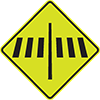
Người đi bộ qua

Coi chừng trẻ em
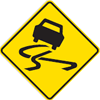
Bề mặt trơn
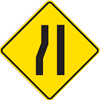
Đường hẹp

Cảnh báo trước chiều cao giải phóng mặt bằng
Dấu hiệu cảnh báo tạm thời
Dấu hiệu cảnh báo tạm thời là màu cam và đen.

Công trình đường
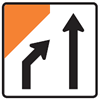
Làn đường bên trái bị đóng

Trượt
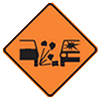
Bề mặt sỏi

Dừng theo yêu cầu
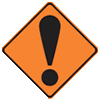
Các mối nguy hiểm khác
Lưu ý: Biển báo này sẽ luôn luôn được
hiển thị với một biển báo khác
giải thích mối nguy hiểm,
ví dụ: “Ngập lụt”
Dấu hiệu thông tin
Các dấu hiệu thông tin cung cấp cho bạn thông tin hữu ích, ví dụ, khoảng cách đến thị trấn tiếp theo. Tất cả đều có hình chữ nhật, nhưng có nhiều màu sắc và kích cỡ khác nhau.

Bạn có thể rẽ trái, nhưng trước tiên nhường đường cho bất kỳ
người đi bộ và phương tiện nào khác
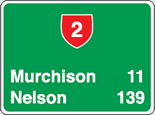
Hiển thị số xa lộ tiểu bang và
khoảng cách bằng kilômét đến những nơi được liệt kê
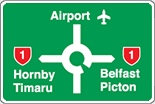
Hiển thị chỉ đường đến các địa điểm
tại giao lộ kế tiếp
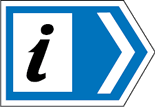
Hiển thị đường đến gần nhất
trung tâm thông tin
![]()
Hiển thị số xa lộ tiểu bang
và hướng đến những nơi được liệt kê

Dấu hiệu thông tin tạm thời — công trình đường hoặc
công trường xây dựng tiếp cận 100 mét phía trước

















































